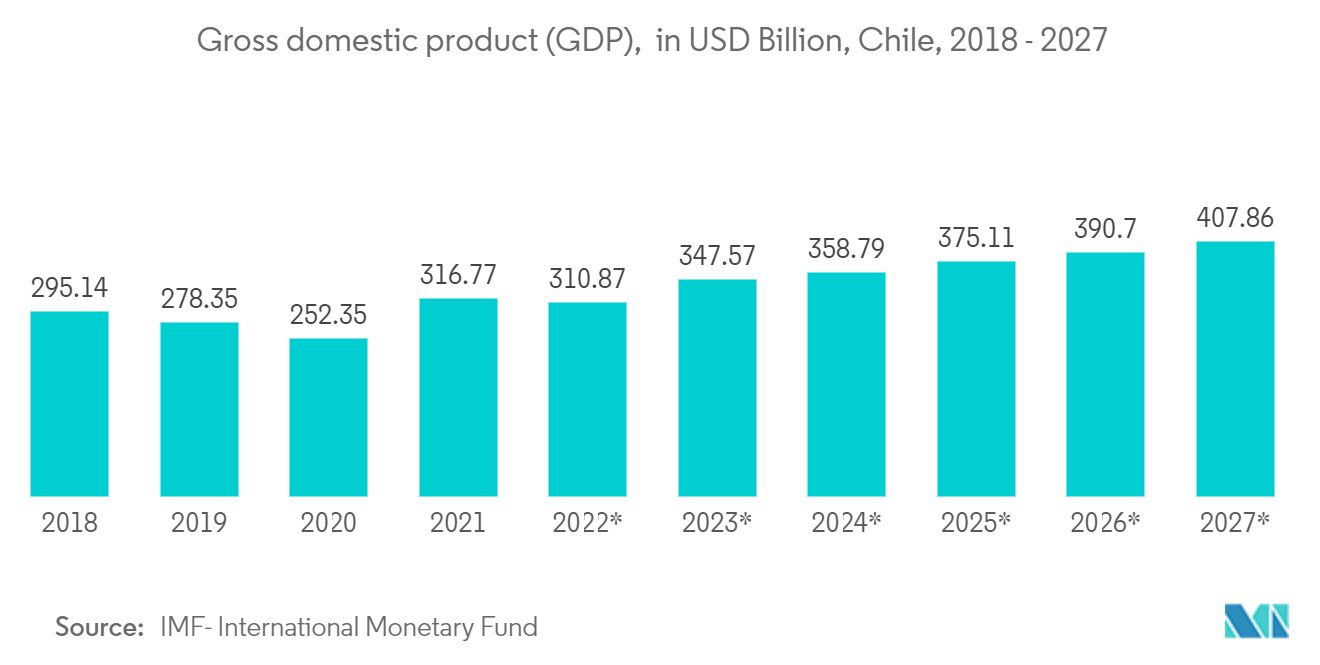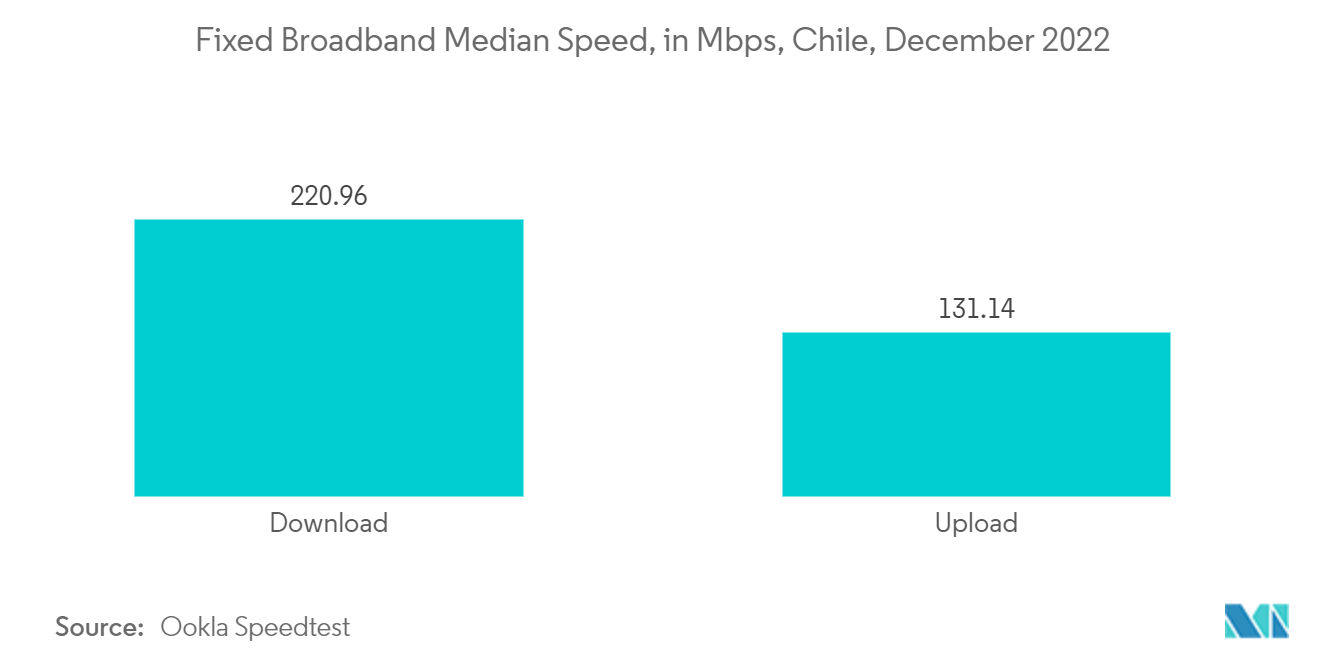Market Trends of Chile ICT Industry
This section covers the major market trends shaping the Chile ICT Market according to our research experts:
Growing demand for Cloud Technology
- Chile's ICT industry is driven by the significant increase in private and government investment, rising consumer spending, and increasing demand for cloud services. For Instance, Kyndryl, the world's prominent IT infrastructure services provider, announced a partnership with Oracle to help customers accelerate their journey to the cloud by delivering managed cloud solutions to enterprises worldwide.
- For Instance, Oracle Corp intends to extend its public cloud platform by establishing 14 new global cloud zones. Oracle aims to build 14 cloud regions across four continents. They would be made in Italy, Sweden, Spain, Singapore, South Africa, Mexico, Colombia, the United Arab Emirates, Saudi Arabia, France, Israel, and Chile, among other places. The increasing infrastructure development would increase demand for cloud computing technology adoption, creating new growth opportunities for the Chilean ICT market.
- Key players in the ICT market upgrade their existing technology with cloud computing solutions primarily drives the market growth. For Instance, Kyndrylthe world's largest IT infrastructure services provider includes a strategic partnership with Google Cloud, focused on accelerating customers' digital transformations and helping them become more advanced, data-driven, and sustainable businesses.
- Furthermore, the increasing investments by the government in promoting numerous technology development, such as 5G, AI, IoT, machine learning, Big Data, etc. Additionally, the digital transformation emergence is expected to drive the Chilean ICT market growth. For Instance, Google Cloud Platform (GCP), a cloud service provider, announced expansion plans and incremental details on its cloud regions in Santiago (Chile).
- The growing population in the region and the increasing need for adopting advanced technologies such as Cloud, IoT, and artificial intelligence are boosting the market's growth. According to the IMF, Chile's GDP will be USD 407.86 billion by 2027. It indicates that the GDP is growing, and the development of the Chilean ICT market is expected to grow over the next five years.

The IT and Telecom Sector is Expected to Drive the Market
- The increasing IT and Telecom infrastructure investments are driving the ICT market growth. For Instance, Huawei plans to build its third data center in the Santiago Metropolitan Region in Chile in the first half of 2023. The facility would involve an investment of around USD 100 million. Such investments would bring new growth opportunities for the Chilean ICT market.
- Cyberattacks are expected to continue to grow over the next five years. IT operation advancements will prevent the ICT market from cyberattacks. For Instance, Radware, a prominent cybersecurity and application delivery solutions provider, opened a new cloud security center in Santiago, Chile. Customers in Argentina, Chile, Peru, and Uruguay would be able to increase their cyber defenses, protect their web and mobile apps and APIs with minimal latency, and meet data localization requirements. Such initiatives would bring new growth opportunities for the Chilean ICT market.
- The country's 5G transition is still rising due to expanding new networks and increasing demand for high-speed connectivity services. For Instance, Entel completed the first stage of its 5G network rollout, with it available in 270 of the country's 346 communes. 5G extend its coverage to cover 300 sites, including 199 public hospitals, 25 universities, 24 government ministries, 19 seaports, and 15 airports.
- The telecom industry growth is mainly due to the increasing population with the rising broadband services adoption in the country. According to the Ookla Speedtest Global Index, Chile ranked 3rd with a median fixed broadband download speed of 220.96 Mbps in December last year. Fixed broadband services penetration is growing significantly and thus increasing the telecom services sector demand.


